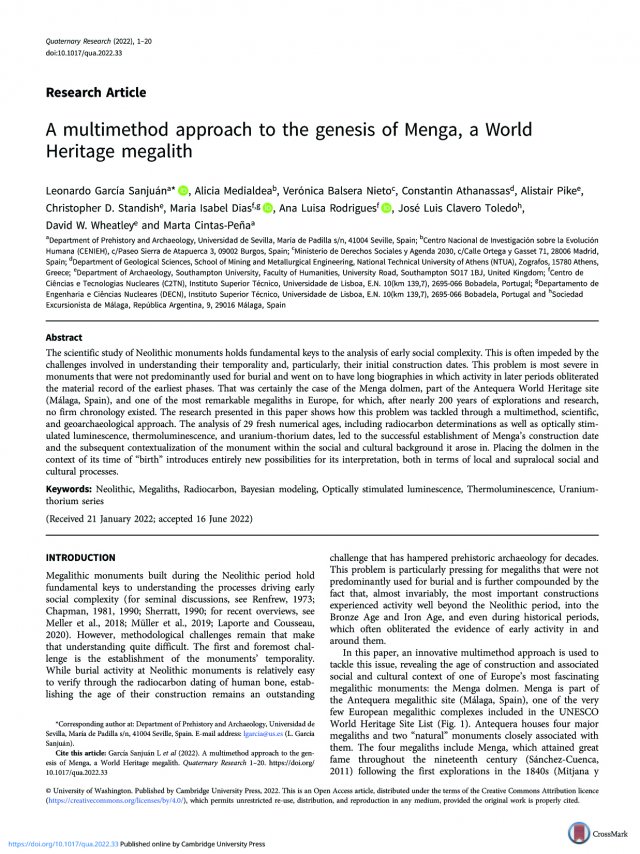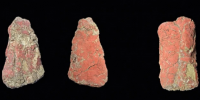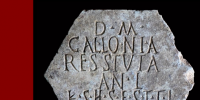We publish a new article titled “A multimethod approach to the genesis of Menga, a World Heritage megalith“. The scientific study of Neolithic monuments holds fundamental keys to the analysis of early social complexity. This is often impeded by the challenges involved in understanding their temporality and, particularly, their initial construction dates. This problem is most severe in monuments that were not predominantly used for burial and went on to have long biographies in which activity in later periods obliterated the material record of the earliest phases. That was certainly the case of the Menga dolmen, part of the Antequera World Heritage site (Málaga, Spain), and one of the most remarkable megaliths in Europe, for which, after nearly 200 years of explorations and research, no firm chronology existed. The research presented in this paper shows how this problem was tackled through a multimethod, scientific, and geoarchaeological approach. The analysis of 29 fresh numerical ages, including radiocarbon determinations as well as optically stimulated luminescence, thermoluminescence, and uranium-thorium dates, led to the successful establishment of Menga’s construction date and the subsequent contextualization of the monument within the social and cultural background it arose in. Placing the dolmen in the context of its time of “birth” introduces entirely new possibilities for its interpretation, both in terms of local and supralocal social and cultural processes.



